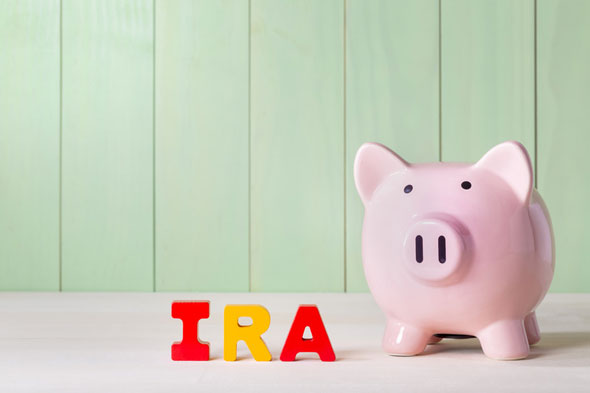{{parent.cta_data.text}}
COMMUNITY

6 ways you can save for college
http://www.savingforcollege.com/articles/6-ways-you-can-save-for-college-837
Posted: 2015-09-09
According to our annual College Savings Survey, 75% of respondents are confident that their children or grandchildren will go to college, yet only 41% have started saving. Whatís more, 49% of those who arenít saving say they havenít started because they donít have time to research their options. To help these families, weíve listed six common ways you can start a college fund, and the biggest pros and cons of each:

1. Mutual Funds
Pros:
- The funds you save in a mutual fund can be spent on anything Ė cars, airline tickets, computers, etc.
- Thereís no limit as to how much you can invest.
- There are more than 10,000 mutual funds available, with a wide variety of investment options.
Cons:
- Earnings in a mutual fund are subject to annual income taxes.
- Any capital gains are taxed when shares are sold.
- A mutual fund owned by a parent will reduce financial aid eligibility by up to 5.64% of the account value, and by 20% if owned by the student.
RELATED: The 15 lowest-cost 529 plans

2. Custodial accounts under UGMA/UTMA
Pros:
- The money saved in a custodial account can be spent on anything Ė cars, airline tickets, computers, etc, as long as the funds are used for the benefit of the minor.
- There is no limit as to how much you can invest.
- The value of the account is removed from donorís gross estate.
Cons:
- Earnings and gains are taxed to the minor and subject to the ďkiddie taxĒ - unearned income over $2,100 for certain children through age 23 is taxed at parents rate.
- The student will gain legal rights to the account once he or she reached legal age, and can use they money at their own discretion.
- Custodial accounts are counted as a student asset on the FAFSA, which means they can reduce a studentís aid package by 20% of the account value.
RELATED: Who can open a 529 plan?

3. Qualifying U.S. Savings Bonds
Pros:
- U.S. savings bonds are federal tax-deferred and state tax-free.
- Series EE and I bonds purchased after 1989 may be redeemed federally tax-free for qualifying higher education expenses.
- Bond owners are investing in interest-earnings bonds backed by the full faith and credit of the U.S. government.
Cons:
- The maximum investment allowed is $10,000 per year, per owner, per type of bond.
- The interest exclusion phases out for incomes between $115,750 and $145,750 (in 2015) for married couples filing jointly or $77,200 and $92,200 for individuals.
- If bond proceeds are not spent on tuition and fees, interest earned will be included in federal income and subject to tax.
RELATED: Are U.S. savings bonds still an effective way to save for college?

4. Roth IRA
Pros:
- The normal 10% penalty on early withdrawals is waived when the funds are spent on qualified higher education expenses.
- There is a broad range of investment options available.
- The value of retirement accounts is not counted as an asset on the FAFSA.
Cons:
- The maximum investment allowed is $5,500 ($6,500 for taxpayers 50 and over).
- Only married couples earning less than $183,000 (in 2015) or individuals earning less than $116,000 may contribute the maximum amount.
- When you withdraw from a Roth IRA to pay for college itís counted as student income on the following yearís FAFSA, and can reduce aid eligibility by up to 50% of the value of the withdrawal.
RELATED: Which is best: 529 plan or Roth IRA?

5. Coverdell ESA
Biggest Pros:
- With Coverdell Education Savings Accounts (ESAs) you can take advantage of tax-free withdrawals to pay for qualified higher education expenses and also K-12 expenses.
- There are a broad range of investment options available, including the ability to self-direct your investments.
- The value of a Coverdell ESA account is counted as a parent asset on the FAFSA, no matter whether a parent or the student owns it.
Biggest Cons:
- The maximum investment allowed is $2,000 per beneficiary per year, combined from all sources.
- Contributions have to be made before the beneficiary turns 18, and the account can only be used until they turn 30.
- Only married couples earning between $190,000 and $220,000 or individuals earning between $95,000 and $110,000 are able to contribute.

6. 529 plan
Biggest Pros:
- Withdrawals spent on qualified higher education expenses avoid federal tax, and some states offer additional state tax benefits.
- Maximum investments can exceed $300,000 over the life of the account, and deposits up to $14,000 per year per individual will qualify for the annual gift tax exclusion. Thereís also an option to treat a contribution up to $70,000 in one year as if it were made over a five-year period to shelter a larger amount from taxes.
- 529 accounts receive favorable financial aid treatment: accounts owned by students are treated as parent assets and nothing has to be reported on the FAFSA when the funds are withdrawn to pay for college.
Biggest Cons:
- Earnings are subject to income tax and a 10% penalty if the withdrawal is not spent on qualified higher education expenses.
- Investment strategies available are limited to whatís offered by the program.
- Withdrawals from accounts owned by someone other than the student or their parent have to be added back to the studentís income on the following yearís FAFSA and can reduce aid eligibility by as much as 50% of the amount of the distribution.
RELATED: See the top 10 direct-sold plans
According to our annual College Savings Survey, 75% of respondents are confident that their children or grandchildren will go to college, yet only 41% have started saving. Whatís more, 49% of those who arenít saving say they havenít started because they donít have time to research their options. To help these families, weíve listed six common ways you can start a college fund, and the biggest pros and cons of each:

1. Mutual Funds
Pros:
- The funds you save in a mutual fund can be spent on anything Ė cars, airline tickets, computers, etc.
- Thereís no limit as to how much you can invest.
- There are more than 10,000 mutual funds available, with a wide variety of investment options.
Cons:
- Earnings in a mutual fund are subject to annual income taxes.
- Any capital gains are taxed when shares are sold.
- A mutual fund owned by a parent will reduce financial aid eligibility by up to 5.64% of the account value, and by 20% if owned by the student.
RELATED: The 15 lowest-cost 529 plans

2. Custodial accounts under UGMA/UTMA
Pros:
- The money saved in a custodial account can be spent on anything Ė cars, airline tickets, computers, etc, as long as the funds are used for the benefit of the minor.
- There is no limit as to how much you can invest.
- The value of the account is removed from donorís gross estate.
Cons:
- Earnings and gains are taxed to the minor and subject to the ďkiddie taxĒ - unearned income over $2,100 for certain children through age 23 is taxed at parents rate.
- The student will gain legal rights to the account once he or she reached legal age, and can use they money at their own discretion.
- Custodial accounts are counted as a student asset on the FAFSA, which means they can reduce a studentís aid package by 20% of the account value.
RELATED: Who can open a 529 plan?

3. Qualifying U.S. Savings Bonds
Pros:
- U.S. savings bonds are federal tax-deferred and state tax-free.
- Series EE and I bonds purchased after 1989 may be redeemed federally tax-free for qualifying higher education expenses.
- Bond owners are investing in interest-earnings bonds backed by the full faith and credit of the U.S. government.
Cons:
- The maximum investment allowed is $10,000 per year, per owner, per type of bond.
- The interest exclusion phases out for incomes between $115,750 and $145,750 (in 2015) for married couples filing jointly or $77,200 and $92,200 for individuals.
- If bond proceeds are not spent on tuition and fees, interest earned will be included in federal income and subject to tax.
RELATED: Are U.S. savings bonds still an effective way to save for college?

4. Roth IRA
Pros:
- The normal 10% penalty on early withdrawals is waived when the funds are spent on qualified higher education expenses.
- There is a broad range of investment options available.
- The value of retirement accounts is not counted as an asset on the FAFSA.
Cons:
- The maximum investment allowed is $5,500 ($6,500 for taxpayers 50 and over).
- Only married couples earning less than $183,000 (in 2015) or individuals earning less than $116,000 may contribute the maximum amount.
- When you withdraw from a Roth IRA to pay for college itís counted as student income on the following yearís FAFSA, and can reduce aid eligibility by up to 50% of the value of the withdrawal.
RELATED: Which is best: 529 plan or Roth IRA?

5. Coverdell ESA
Biggest Pros:
- With Coverdell Education Savings Accounts (ESAs) you can take advantage of tax-free withdrawals to pay for qualified higher education expenses and also K-12 expenses.
- There are a broad range of investment options available, including the ability to self-direct your investments.
- The value of a Coverdell ESA account is counted as a parent asset on the FAFSA, no matter whether a parent or the student owns it.
Biggest Cons:
- The maximum investment allowed is $2,000 per beneficiary per year, combined from all sources.
- Contributions have to be made before the beneficiary turns 18, and the account can only be used until they turn 30.
- Only married couples earning between $190,000 and $220,000 or individuals earning between $95,000 and $110,000 are able to contribute.

6. 529 plan
Biggest Pros:
- Withdrawals spent on qualified higher education expenses avoid federal tax, and some states offer additional state tax benefits.
- Maximum investments can exceed $300,000 over the life of the account, and deposits up to $14,000 per year per individual will qualify for the annual gift tax exclusion. Thereís also an option to treat a contribution up to $70,000 in one year as if it were made over a five-year period to shelter a larger amount from taxes.
- 529 accounts receive favorable financial aid treatment: accounts owned by students are treated as parent assets and nothing has to be reported on the FAFSA when the funds are withdrawn to pay for college.
Biggest Cons:
- Earnings are subject to income tax and a 10% penalty if the withdrawal is not spent on qualified higher education expenses.
- Investment strategies available are limited to whatís offered by the program.
- Withdrawals from accounts owned by someone other than the student or their parent have to be added back to the studentís income on the following yearís FAFSA and can reduce aid eligibility by as much as 50% of the amount of the distribution.
RELATED: See the top 10 direct-sold plans
If you liked this post and think it would help others save for college, please share!
Recommended Articles
SPONSOR CONTENT
Financial Professionals
Top 529 College Savings Plans
One-year rankings are based on a plan's average investment returns over the last 12 months.
| State | Plan Name | |
|---|---|---|
| 1 | Nevada | USAA 529 Education Savings Plan |
| 2 | Florida | Florida 529 Savings Plan |
| 3 | New Jersey | NJBEST 529 College Savings Plan |
Three-year rankings are based on a plan's average annual investment returns over the last three years.
| State | Plan Name | |
|---|---|---|
| 1 | South Dakota | CollegeAccess 529 (Direct-sold) |
| 2 | Wisconsin | Edvest 529 |
| 3 | Nevada | USAA 529 Education Savings Plan |
Five-year rankings are based on a plan's average annual investment returns over the last five years
| State | Plan Name | |
|---|---|---|
| 1 | Indiana | CollegeChoice 529 Direct Savings Plan |
| 2 | Florida | Florida 529 Savings Plan |
| 3 | Alaska | T. Rowe Price College Savings Plan |
10-year rankings are based on a plan's average annual investment returns over the last ten years.
| State | Plan Name | |
|---|---|---|
| 1 | West Virginia | SMART529 WV Direct College Savings Plan |
| 2 | South Carolina | Future Scholar 529 College Savings Plan (Direct-sold) |
| 3 | Ohio | Ohio's 529 Plan, CollegeAdvantage |

 {{parent.title}}
{{parent.title}}
 Login
Login

